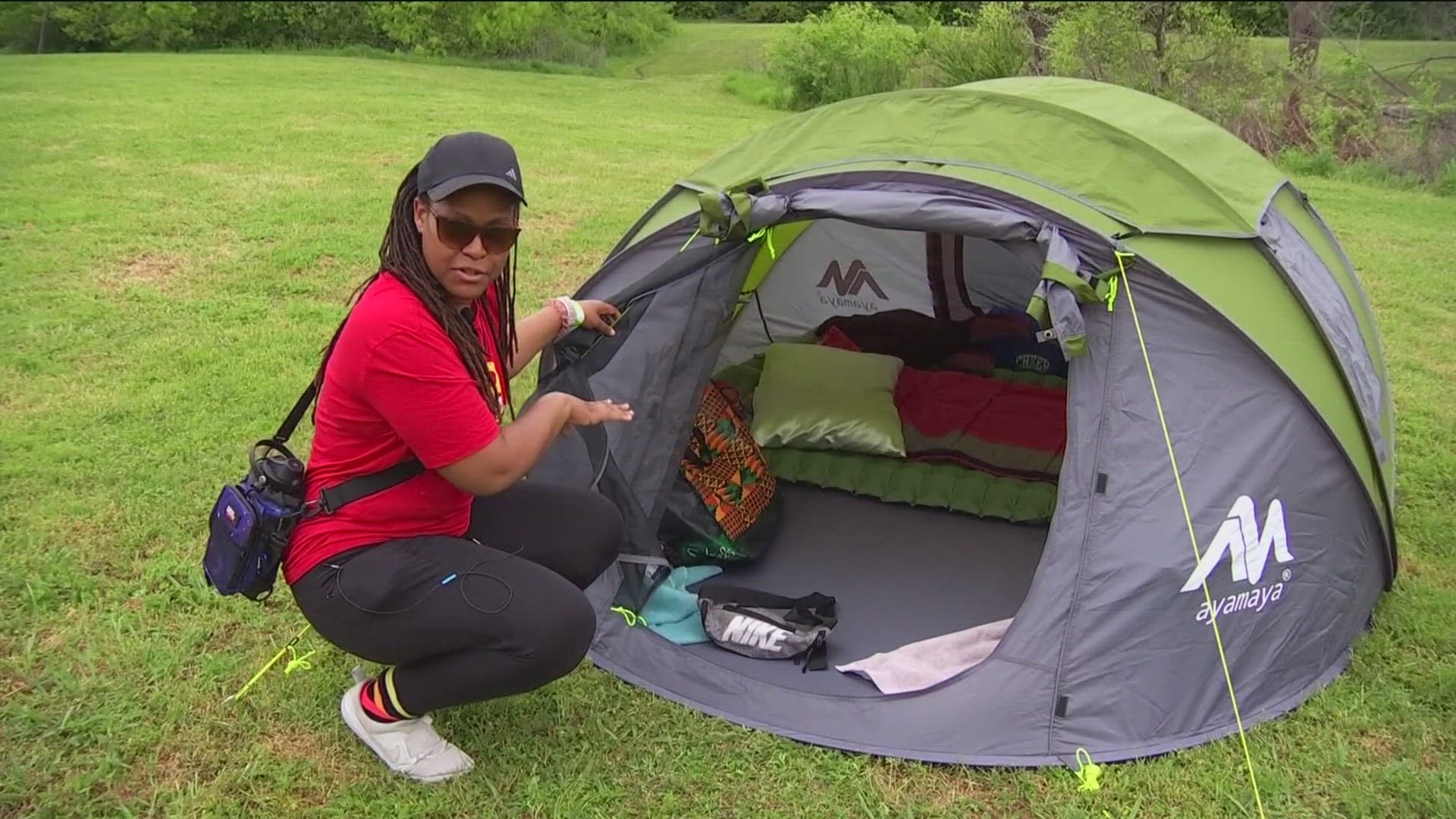MINNEAPOLIS — Traffic jams, crowded flights, overbooked hotels and campgrounds — all part of the huge rush by tourists to get closer to the path of totality, the area where 100% of the sun will be blocked by Monday's eclipse.
Texas Public Safety officials say they're expecting one million people to converge on the northern parts of that state, which is expecting clear weather for the rare celestial event.
Larry Olson of Chisago City made the trek from Minnesota to Lieber State Recreation Area in central Indiana, one of four spots he reserved inside the totality zone.
"I made reservations in campgrounds in Texas, Indiana and Missouri. And then I made hotel reservations in Ohio because campgrounds aren’t open in Ohio in April, just like Minnesota," Olson told KARE via Zoom Sunday.
The Twin Cities area was positioned to see the sun 70% obscured by the moon, but the current forecast calls for rain and cloud cover during those critical moments Monday.
Olson's an engineer who took up astrophotography as a hobby years ago. That led him to Grand Island, Nebraska for the last solar eclipse, where he snapped photos of the total eclipse with only the sun's corona visible.
"This time, I’m doing a little science experiment as well, so we’ll see how that works out for me. I'm trying to reconfirm Einstein’s theory of relativity."
He trusts the skies will remain clear enough in that part of Indiana to see the eclipse clearly, but if the forecast changes he's prepared to drive three or four hours to get to the right spot.
National reports showed travelers setting up tents in campgrounds across the country, or visiting tourist spots inside the path of totality. Some worried the weather might change, but it wouldn't be a total loss even if clouds got in the way.
"Even if you can't see totality, you'll still be able to experience the eclipse. It will get dark, you'll have animals that will come out thinking that it's nighttime," Noah Egge of the National Science Foundation told reporters in Texas.
In Maine, on the other end of the arc, farmers said they'll be watching to see if hens retreat to their roosts once the sky becomes dark. Animals in the wild may also fall for the moon shadow's deep fake.
"I'm going to be listening for owls," University of New England professor Zach Olson told reporters. "I'd love to hear an owl announce itself during totality. I think that would be really cool."
Researchers at the University of Southern Illinois are setting up hundreds of microphones in the wilderness to capture the sounds of wildlife reactions.
"We typically see breeding birds quiet down. We’ll see some nocturnal or corpuscular insects start to vocalize. There’s some research suggesting bees retreat to hives," Brent Pease, a forestry professor explained.
"This isn’t a frequent event. This is a slow build and we’re just here at the right time at the right place."
NASA will be in the air too on Monday with specially equipped jets that all scientists to capture readings they can only get at 60,000 feet. They'll be studying solar winds and temperature variations inside the corona.
"A total solar eclipse is like nature's perfect coronagraph," Solar Astrophysicist Amir Caspi explained.
"The moon comes between us and the son and it exactly the right size in the sky to block out the disc of the sun, but not too much more."

